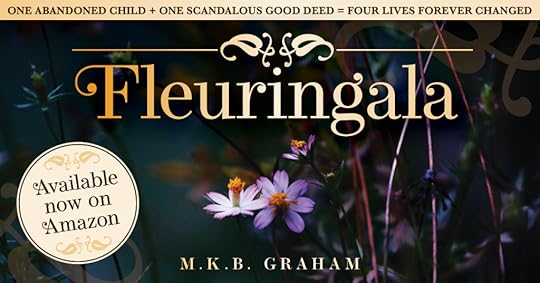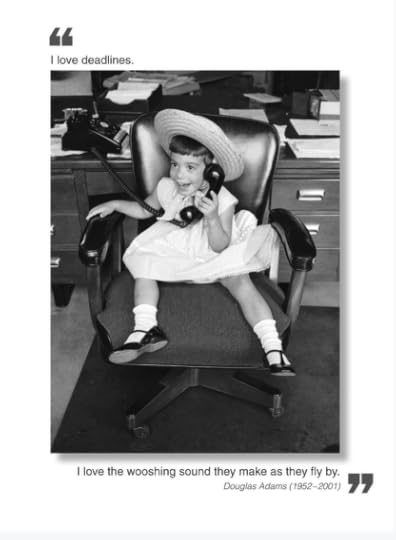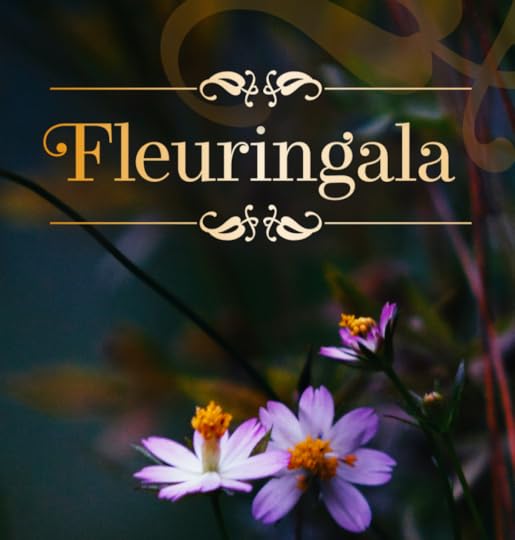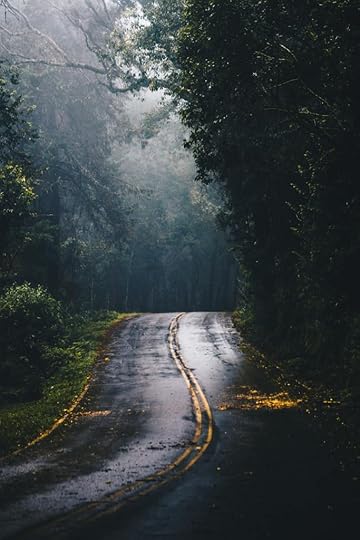M.K.B. Graham's Blog, page 3
April 4, 2022
A Thoreau moment …

I don’t know about the rest of you, but I am tired of sitting at a computer screen, “talking” or “meeting” with friends and colleagues and “seeing” them in one dimension. Very, very tired.
Recently, I had two back-to-back Zoom meetings totally 3 1/2 hours. (Zooming persists even in our somewhat post-COVID world because of its sheer convenience.)
I realized this morning how nice it would be to ditch the screens and electronics and live for a while in a cabin in the woods with a stack of good books, yellow pads and sharp pencils, a coffee maker, and a pot of soup on the stove. In fact, I have an overwhelming urge for it.
A Thoreau moment, so to speak. I could go for it, a few weeks of simple, uncomplicated living.
As it is, though, I am stuck in that complicated and conflicting world of the internet. It is very much like standing on the edge of a crevasse, looking down curiously, and hoping one doesn’t fall headlong into it—yet the temptation to jump never ceases.
As a writer, of course, I am grateful for the convenience of online research and the ease of correcting copy, but it comes at a price. One peril of such ease is that I am far too likely to write carelessly with the understanding that I can go back and correct. That might be a good thing, but still I wonder. I often think about Twain and Dickens and Eudora Welty who had no such luxury; how much more exacting their first drafts must have been.
Another peril is the constant temptation to tinker. There comes, I would surmise, a point of diminishing returns when making changes becomes an exercise in futility.
Finally, there is the unrelenting temptation to skid off the path, to click on a post or email that catches my attention and pulls e off course. (I recently joined the ‘Far Side’ Facebook group. That was probably a mistake.)
Perhaps a little Thoreau moment would improve my writing. It would certainly take me back to the fundamentals of pencil and paper. And, I suspect, it would almost certainly enrich my creativity and sharpen my focus.
[image error]August 17, 2021
Writers and earbuds …
I’ve spent a lot of time walking on a track near my house this summer. It’s been lovely to get out and move. Often I pass other walkers—and more times than not, they have earbuds stuck in their ears with heads down, ignoring everything going on around them.
In fact, everywhere I go these days, it seems people are sporting earbuds. I understand listening to a podcast or music occasionally. But cutting off one sense, ignoring what’s going on around you is dangerous……especially for writers. And here’s why.

Effective writing, especially fiction and creative writing, requires that writers invoke all the senses of their readers. A good writer will employ a reader’s sight, touch, smell, taste, and yes, hearing. To do so, a writer must have a solid bank of personal experiences on which to draw.
Listening is one of the best—and I would say most important—ways to build that bank.
For instance, sitting in a train station in, let’s say, Mobile, Alabama, will teach an observant writer a lot about Southern dialect, about word choices, about inflection. The same experience would be quite different than in, say, Alberta, Canada. The language would sound different. The colloquialisms would be different. The emphases, the accents, the variations in words and pronunciations would be dramatically different.
This kind of listening, even subliminally, teaches writers. A good writer absorbs it, packs it away, savors it to call on when the literary need arises.
And beyond the human sounds, there are the mechanical sounds of a train station, the rustle of passengers, the clanging and banging of baggage transport, the squeal of wheels, the rumble of engines. Spinning around all those sounds is an amazing array of “color” that feeds the writer’s craft, that fills his or her toolbox, that informs and enriches a writer’s prose. Writers can and should draw from these quotidian life experiences; it is the difference between rich and poor writing.
But all of these sounds—these rich and descriptive sounds—are LOST to those who constantly fill their ears with I-Tunes.
Writers and earbuds…
I’ve spent a lot of time walking on a track near my house this summer. It’s been lovely to get out and move. Often I pass other walkers—and more times than not, they have earbuds stuck in their ears with heads down, ignoring everything going on around them.
In fact, everywhere I go these days, it seems people are sporting earbuds. I understand listening to a podcast or music occasionally. But cutting off one sense, ignoring what’s going on around you is dangerous……especially for writers. And here’s why.

Effective writing, especially fiction and creative writing, requires that writers invoke all the senses of their readers. A good writer will employ a reader’s sight, touch, smell, taste, and yes, hearing. To do so, a writer must have a solid bank of personal experiences on which to draw.
Listening is one of the best—and I would say most important—ways to build that bank.
For instance, sitting in a train station in, let’s say, Mobile, Alabama, will teach an observant writer a lot about Southern dialect, about word choices, about inflection. The same experience would be quite different than in, say, Alberta, Canada. The language would sound different. The colloquialisms would be different. The emphases, the accents, the variations in words and pronunciations would be dramatically different.
This kind of listening, even subliminally, teaches writers. A good writer absorbs it, packs it away, savors it to call on when the literary need arises.
And beyond the human sounds, there are the mechanical sounds of a train station, the rustle of passengers, the clanging and banging of baggage transport, the squeal of wheels, the rumble of engines. Spinning around all those sounds is an amazing array of “color” that feeds the writer’s craft, that fills his or her toolbox, that informs and enriches a writer’s prose. Writers can and should draw from these quotidian life experiences; it is the difference between rich and poor writing.
But all of these sounds—these rich and descriptive sounds—are LOST to those who constantly fill their ears with I-Tunes.
April 10, 2021
And here it is …
For more than a decade I’ve tinkered with a book. The title has changed. The main characters’ names have changed. The plot has changed. But finally, it is finished. Now, at long last, I’ve published it. And here it is …
FLEURINGALA, a novel the opens in Southwestern Virginia on the cusp of 1940, is the story of a young girl abandoned by her no-count mother. The girl, Ruby Glory, and her faithful dog Arly live alone in a rundown shack on the outskirts of Lauderville. Then along comes Tack Pittman, the son of a prominent family. Seeing Ruby’s circumstance, Tack is compelled to help the child—only to stir up the disapproval of his small town’s upper crust by associating with “those kinds of people.” The consequences are harsh and immediate. What ensues is a fight for Ruby and an unplanned adventure where the two mismatched friends discover that wonder still exists and that life still has surprises in store for them.
If you enjoyed CAIRNAERIE, my first novel, I invite you to try this new story. It’s available now on Amazon, both in print and as an e-book
And if you do read it, I am eager to hear what you think. Chime in here, on Facebook, or on Goodreads.

March 19, 2021
Deadlines wooshing by …
As an writer, I’m accustomed to deadlines. They are a necessary evil of the publishing business. Usually, I’m fine with deadlines. Actually, I appreciate them. Deadlines help me manage my time and keep me on track.
 The card that has graced my desk for more than a decade.
The card that has graced my desk for more than a decade.Writing a book is an exercise in determination and patience. To do it right, a writer must allow sufficient time for ideas to percolate, for reconsiderations of plot to occur, for characters to blossom, for relentless checking and rechecking of every little detail to be thorough. Rushing is an occupational hazard with serious consequences.
Recently, I submitted a requested story to an organization. I was in a hurry and misspelled the name of a company. In the world of journalism, that’s an unforgivable mistake. Fortunately, an astute colleague caught it before it went public. I was saved from my own mistake of rushing.
A novel, especially a self-published novel, requires lots of time. That means hours and hours and hours of writing and thinking and correcting and proofing…..and repeating all these steps, sometimes multiple times, until it is right. And all this makes self-imposed deadlines meaningless.
I know.
My latest book, soon to be published, was not supposed to take three years to complete. I began writing it years ago. How many years? Well, I’ve lost count. But trust me, it’s a lot of years.
I revisited the manuscript after publishing CAIRNAERIE in the spring of 2017. At the time, I thought I could certainly complete the second novel within a year, maybe two. But when I got into it, I realized I had significant work to do.
Now—four years later—my own deadline has gone whooshing by. But it was worth the wait. I like this revised version far more than the original drafts. And I hope readers will think the same. Here’s a sneak peak ….

Many thanks to The Borealis Press, Inc 83 Main St., PO Box 1988, Bucksport, ME 04416, for their permission to use the card image above. You’ve gotta love a company that answers a ‘permission to use’ request within hours!
January 5, 2021
So I obsess …
Finishing a novel is a challenging task, one I’ve undertaken during the months of our corporate COVID-19 shutdown. My newest novel, Fleuringala, is now in the hands of my very able graphic designer Stephanie Pierce. She has designed a beautiful cover and, as I write this, she is formatting the interior for me.
Writing a novel is like embarking on a convoluted trip with multiple stops along the road, with detours, roundabouts, backtracks, smooth roads and bumpy ones. Finishing it is like seeing your destination in the distance and hoping you can make it to the end without getting lost or running out of gas.
 Photo by Kaique Rocha from Pexels
Photo by Kaique Rocha from PexelsI once asked John Grisham how he knows when a novel is finished. He punted. He said something like “you just stick on the ending.” He didn’t understand my question at all. He apparently knows his endings before he writes his beginnings. I don’t work that way at all.
For me, writing a novel is living it, discovering what happens to the characters, watching how they grow and meet challenges, waiting for unexpected events to upend their lives, and figuring exactly how they should and would react. This is how C.S. Lewis wrote, and although I don’t pretend to put myself in his company, his advice has been instructive and his method, affirming.
As for finishing a novel, I review every plot line, scene, sentence, word choice, metaphor, and character reaction. I obsess. A novel has to fit together logically and compellingly, like a tapestry—or a travel plan. It has to be just right so that the story line is believable and evokes a reaction in readers.
And it has to end at just the right spot, not be cut short by a writer’s impatience or linger too long over a writer’s uncertainty. A good ending has to be surprising and satisfying. I’ve read good books ruined by bad endings and mediocre books saved by great ones.
So I obsess.
To get it right, I often leave a story alone for months or weeks so that I have the luxury of returning to it with fresh eyes. You would be amazed how many mistakes I see after my mind rests and is able to look objectively at my work. Mr. Grisham, I’m sure, has legions of editors and proofreaders to do this for him; I don’t have that luxury. It’s all on me.
So I obsess.
I know when I have finally, finally finished when two things occur. One: When I am completely sick of the story, YET my words still makes me cry. And two: When I start to make a specific change and realize I’ve already made it.
Finally, I am there. And very soon, I’ll push the publish button.
July 9, 2020
“Stop. Let me catch up!”
As a child I had a little red tricycle. I loved it. I rode around and around the cup-de-sac on the hilltop where I lived. I tried as hard as I could to keep up with the bigger kids, all on bicycles, but I never could. I remember yelling to them, “Stop. Let me catch up.”
It was a phrase I have murmured many times throughout my life. Times when school assignments were coming at me like darts. When my children were growing in number and stature, seemingly right before my eyes. When so many of life’s demands had my attention. When the accumulation of things and people and commitments and jobs simply overwhelmed me.
[image error]
“Stop! Let me catch up!”
And now, as I sit in my still kitchen, the world has stopped for the most part. Businesses are shuttered. Schools are closed. Restaurants are still. Only hospitals and groceries are bustling.
A pandemic that has caused the world to stop.
Part of me relishes the moment. My 401K does not, but as an optimist, I count on the future. For this moment, I am savoring the stillness, the slower pace, and—dare I say it—the time to catch up.
For the past few months, I have not been idle. I have pursued a project that the have wanted to attack for years. This project, a history of my extensive family, has loitered in countless boxes and documents and photographs piled in my office, waiting for me to find time to get to them.
And now I have.
I’m sure that when this pandemic is all over, when the costs are counted, when the world’s economy starts churning again, I’ll resume a more harried life—shall I say, “a normal life.”
But for the moment I am savoring the time to catch up, savoring the time that I have longed for all my life. Time to catch up.
Image by Free-Photos from Pixabay
May 15, 2020
Change it to paper and ink …
I’ve spent most of our corporate COVID confinement working through mounds of family history. As the the heir apparent of all things family-related, I have boxes of old letters, charts, ephemera, and photos to sort through.
It has been a wonderful adventure. I have learned things about my grandparents that I never knew—that my grandfather contracted pneumonia and Spanish flu in 1918, only months after he and my grandmother were married. He survived. His new brother-in-law, however, a student at Davidson College, did not. He was the only Davidson student to succumb to the virus.
Much of this information I have found in saved letters, newspaper clippings, telegrams, and books. All these “old” things have one thing in common; they will not disappear with the newest iteration of technology.
Among my inherited documents is a strange red plastic “loop.” It is a voice recording that my father made. It is a dictaphone recording—a “dictabelt” to be precise—a 1950s and [image error]60s technology used by corporate executives. As a banker, Dad regularly dictated letters for his secretary, Mrs. Levinson, to transcribe and send.
As much as I would like to hear what’s on the tape, I have no way to “play” it, and I doubt many dictaphone machines even exist anymore. If they exist at all.
By contrast, some of the letters I’ve read are more than a century old. They tell me about life then, about my family’s trials and tribulations, about my great grandfather’s life as a Presbyterian pastor, about my great aunts and uncles, about my parents’ and their myriad cousins’ experiences during the Great Depression and during two World Wars.
Reading letter after letter, I have begun to “hear” their voices every bit as much as if I were listening to a recording.
In one poignant letter, my great Uncle Dan, the Davidson student who died in 1918, wrote about the trip—his final trip—back to college. I can “hear” the excitement in his[image error] voice as he explains his trip to his “Dear Folks.” I can “hear” his fatigue after traveling by train from Florida to North Carolina in a Pullman crowded with soldiers. I “hear” his frustration at having to spend extra money for tickets, and the relief in finally reaching the depot in Davidson.
I can “hear” him because a letter, like a book, like any printed memorabilia, doesn’t require technology for me to read it. All it takes is some time, sometimes a white sheet laid beneath a faded carbon copy, and occasionally a magnifying glass.
Our modern electronic communications, so widely shared and so seemingly ubiquitous, will disappear sooner than later. I have several old computers sitting in my basement right now with documents I’ll likely never be able to access.
So here I sit using a word processor to write this and assemble all my family stories—transcribing, summarizing, indexing, and filing. When it’s all done, however, I intend to put it in some kind of print form.
I will change it to paper and ink. To last forever.
March 6, 2020
The real CAIRNAERIE …
Tucked into a grove of centennial oaks atop a rise that is a slight quarter mile off Route 100 in Pulaski County, Virginia, is a beautiful old house. For readers of CAIRNAERIE, it should look very familiar.[image error]
Chimneys punctuated the steeply pitched slate roof and rose as if large birds were perched atop. Ornate cornices and dentil moldings framed red brick walls. Long windows stretched from the floor to the ceiling of a wide, wrapping porch where faded paint was peeling from decorative balusters. At the far end of the porch, an empty swing, animated by the breeze, squeaked as it swayed on rusted chains. In the pungent autumn air, it looked rather forlorn. Only smoke curling from one chimney and the light from a single window suggested the house was occupied. Otherwise, he might have thought it abandoned…
[image error]But the real Cairnaerie is anything but abandoned. In fact, for almost 150 years, it has been a family home—my family’s home. Built by my great great grandfather, it is where my great grandfather lived, where my grandfather grew up, and where my father stayed for a year during the Great Depression.
The home’s real name is Rockwood, and it has been a source of curiosity and imagination throughout my life. It was not hard for me to picture the fictional Geneva Snow and her family living there. For me as an author, it was too rich a setting not to use.
In the aftermath of the Civil War, around 1873, Rockwood was built out of brick formed from the surrounding soil and fired on site. It has eight bedrooms, two large parlors, a dining room ending in a large bay window, a floating staircase that curves from the second floor all the way to the English basement, and a belvedere. Throughout the house elaborate crown moldings line the high ceilings, and 65 tall windows, some with Jefferson style openings, frame stunning mountain views. It is the definition of elegance.
Among the house’s most striking features is floor in the front foyer.
The floor was patterned with alternating light and dark planks running diagonally from[image error] the room’s perimeter toward the center where it formed a striking, six-pointed star.
The star has long fascinated me and the hundreds of relatives and visitors who have stepped through Rockwood’s front doors. For my novel, the star was too good a spot not to hide a secret, and the house was the perfect setting—a ready-made and enchanting “place.”
Today, the home is owned by my cousins Frank Drummond and his mother, Sarah. Frank and his wife, Rochelle, began operating the house as a bed and breakfast almost 20 years ago. Since then, Rockwood—the epitome of Southern hospitality—has welcomed guests from all over the world.
To see more pictures of Rockwood, visit the website: https://www.rockwood-manor.com
January 8, 2020
In defense of the Xmas letter …
During the holidays, a message from an old friend popped up in my Facebook feed. It read—with a tinge of regret—that because some people had disparaged the annual Christmas letter, she would not send one out this year. Her Facebook message would have to suffice.
I felt sad for her and for those who wouldn’t read a letter from her. For years I received a delightful letter from a gentleman I had known most of my life. He always got me up to speed on his family who lived away from our former hometown. I looked forward to his[image error] annual missive, and ever since he died several years ago at age 97, I miss his letters. I also have two faithful friends, one in Texas and one in Colorado, whom I hear from every Christmas. I eagerly await their letters.
Christmas letters don’t deserve the bad press they’ve gotten. In fact, these negative assessments probably come from grumps who get their noses out of joint when anyone else celebrates a success. The oft-quoted criticism that Christmas letters are nothing more than “braggadocio” is all a matter of perspective.
And here is mine.
A Christmas letter is a sincere effort to maintain a relationship. It is a long-distance correspondence whose sole purpose is to stay in touch, stay informed—and to stay in each other’s “company”—in spite of time and distance. And if you consider the time and effort it takes to compose a letter, copy it, and mail it out, it becomes even more meaningful.
When I read a Christmas letter, rather than think someone is “bragging,” I celebrate their successes—and sometimes I empathize with their heartaches. Most importantly, I remain part of their lives, and they remain part of mine. A Christmas letter is no different than a conversation, albeit a slow and silent one, but it is a conversation nonetheless. Instead of discouraging each other from writing and sending them, we should be encouraging the practice.
For the most part, we have lost the art of letter writing—a sad commentary on our times. For centuries, letters recorded lives. Unlike newspapers, letters revealed day-to-day life, the kind one discovers over a cup of coffee or during a lengthy telephone call. Personally, I treasure the stacks of letters I have kept that were written by my parents, grandparents, great-grandparents, and others. Today we have relinquished that kind of record keeping to electronic impulses—which disappear with each new technological advance.
But imagine if we were to revive the Christmas letter. Perhaps we could encourage the kind of relationships that bring people together, that keep them close, that keep them caring about one another. In a world where memes, selfies, and 140-character messages rule, Christmas letters (or any written letters) hearken back to a time when one took the time to listen closely, discuss congenially, and exchange civilly the news and ideas important to us all.
Some history is worth repeating. I’m mailing my letters today.



